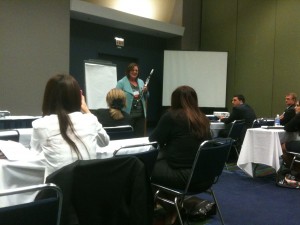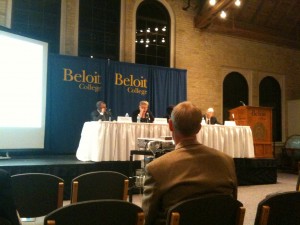I am not sure what I’ll be reading this summer, but I’m happy to share some of my candidates for summer reading. In any case, these might be worth considering for your summer reading list.
I have been interested in information theory for some time, and James Gleick’s The Information: A History, A Theory, A Flood looks like great summer reading. It is accessible and broad-ranging, as far as I can tell so far. If you are interested in the technical details, something like the Elements of Information Theory by Thomas Cover and Joy Thomas will help.
I heard Larry Robertson talk about entrepreneurship at a symposium this year, and I was very impressed by how he approached the topic. So, I am interested in learning more about his approach from his book, A Deliberate Pause: Entrepreneurship and Its Moment in Human Progress.
When countries are ranked according to how important a role entrepreneurship plays in their economies, Israel almost always comes out near the top. In their book Start-Up Nation: The Story of Israel’s Economic Miracle, Dan Senor and Saul Singer look at the possible reasons. I am half-way through the book, and I like how the authors try to offer as nuanced a view as they can. In searching for reasons, it is often tempting to run with a “simple” cultural explanation. While culture certainly must play a role, there are many other important factors, sometimes interacting with culture. I am especially interested in how government policy has enabled the blossoming of entrepreneurial ventures.
Following my interest in entrepreneurship in the arts, I hope to get to Why Are Artists Poor? The Exceptional Economy of the Arts, by Hans Abbing. The author is both an artist and an economist, so I am hoping for some really well-informed and rigorous analysis.
Moving on to innovation, I can’t wait to read Inside Real Innovation by Fitzgerald, Wankerl and Schramm. Professor Brandenberger has built up my expectations quite a bit through his enthusiastic summary of some of the main arguments, including the emphasis on the non-linearity of the process of innovation.
Well, if you get to any of those, let me know what you think. I will definitely read something more literary as well, but I am really not sure what that will be. In addition, I hope I’ll have a chance to listen to some great live music every now and then, and I wish you the same.



 Invited experts also play critical roles in the program‘s core courses, including Innovation. These experts also help the program grow, expanding opportunities for students to engage in real-world entrepreneurship and innovation, through structured practical opportunities to take their course-based projects to commercialization, or internships in businesses or nonprofits that foster entrepreneurship or innovation. The NCIIA grant will help pay for travel expenses of several highly regarded experts who will contribute to the next offering of the Innovation course. The expectation is that students who take I&E courses will gain knowledge and cognitive skills that will equip them to be “change agents.” Combined with LU‘s emphasis on critical thought and information synthesis, the conceptual and practical knowledge gained through these courses will prepare students to undertake imaginative and ambitious innovative and entrepreneurial activities.
Invited experts also play critical roles in the program‘s core courses, including Innovation. These experts also help the program grow, expanding opportunities for students to engage in real-world entrepreneurship and innovation, through structured practical opportunities to take their course-based projects to commercialization, or internships in businesses or nonprofits that foster entrepreneurship or innovation. The NCIIA grant will help pay for travel expenses of several highly regarded experts who will contribute to the next offering of the Innovation course. The expectation is that students who take I&E courses will gain knowledge and cognitive skills that will equip them to be “change agents.” Combined with LU‘s emphasis on critical thought and information synthesis, the conceptual and practical knowledge gained through these courses will prepare students to undertake imaginative and ambitious innovative and entrepreneurial activities.





